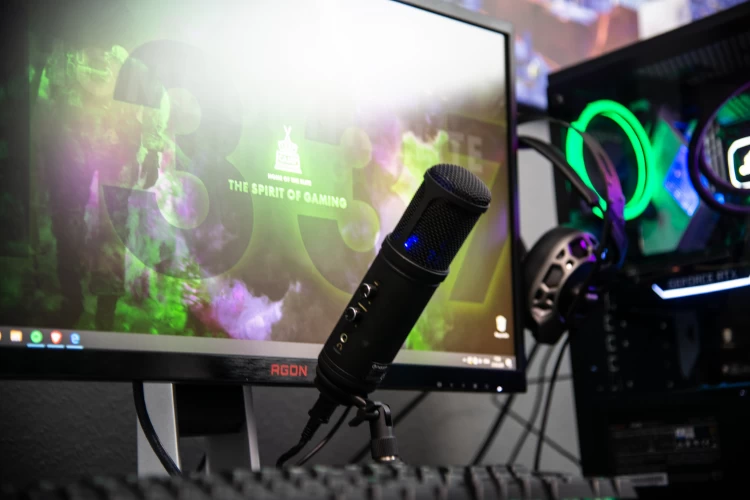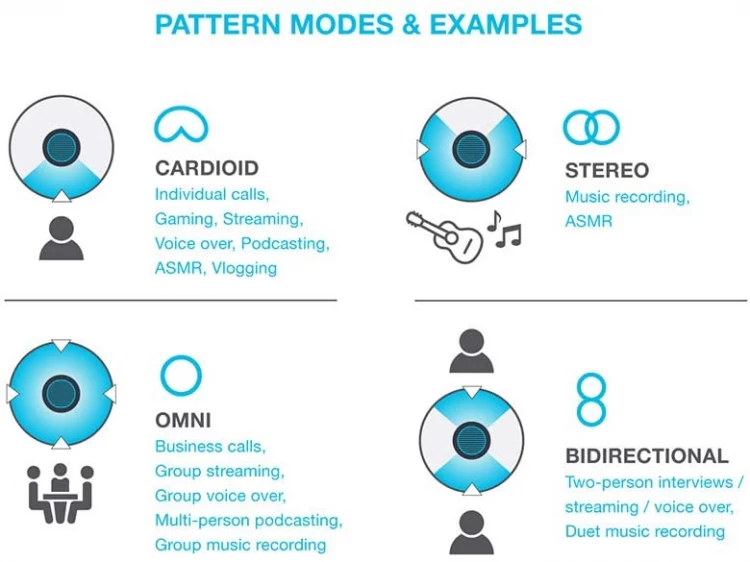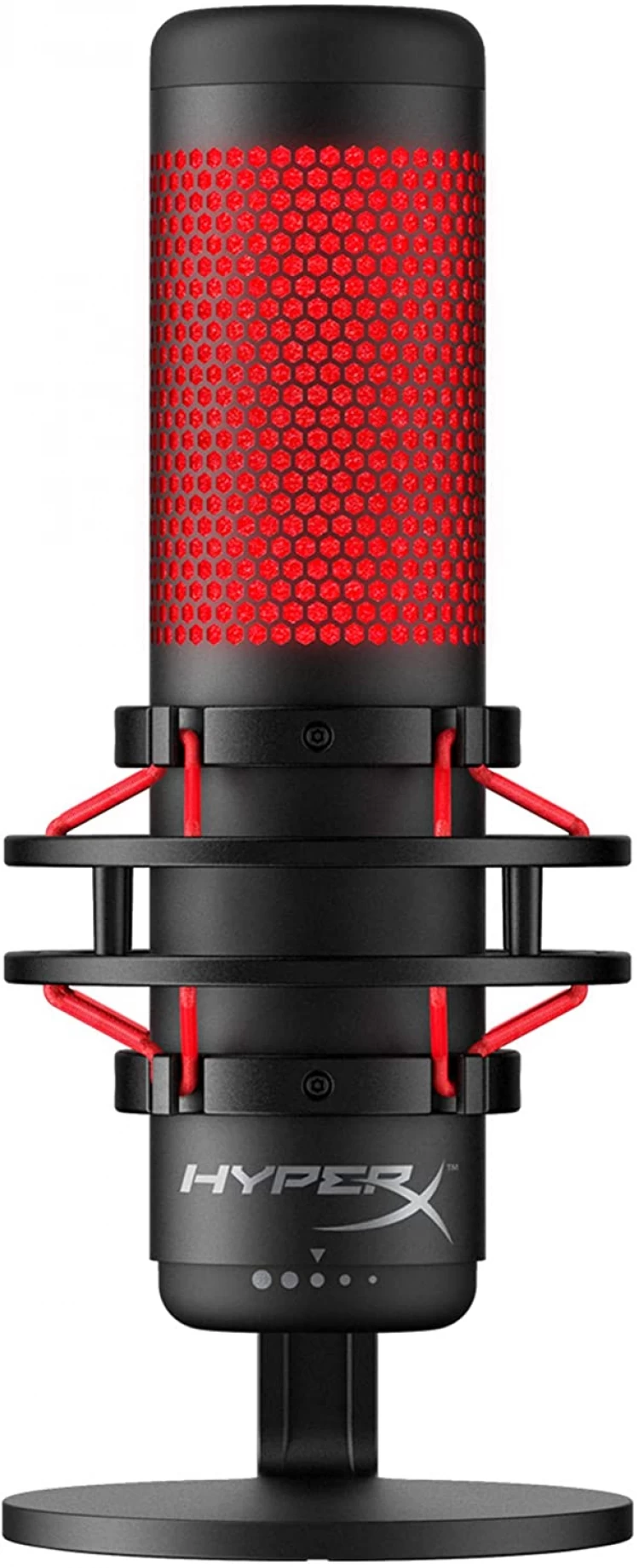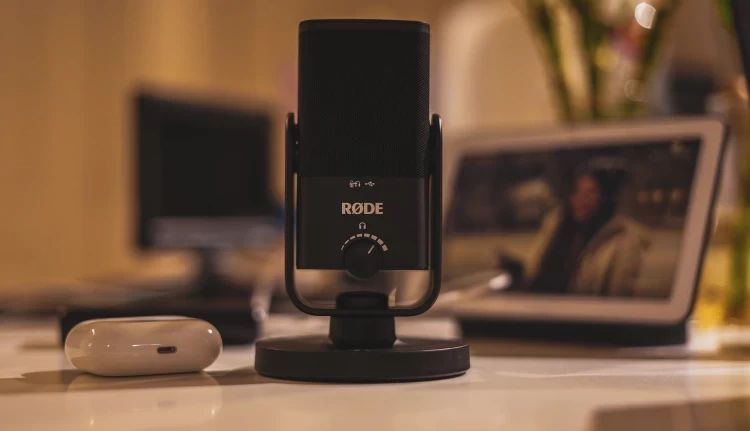What Is A USB Microphone? | Musician Nerd
Updated on Mar 22, 2023
Table of Contents
Throughout their 150-year history, microphones have become easier and easier to use while becoming more and more affordable. Just a little over 50 years ago, you would need a custom-tailored power source for every model of microphone, up until Phantom Power was invented, through the form of the Schoeps model CMT 20.
Phantom Power simplified the process of using a condenser microphone by normalizing the type of power required for these studio-grade audio devices. However, for the common person to use a condenser microphone at home, they would still need to use a preamplifier. Otherwise, the inner electronic components of the capsule won't have enough charge to give recordable output.

Closeup Picture Of A Condenser Microphone
The superior quality and accuracy given by condenser microphones boil down to a scientific process known as Capacitance, which is the ratio of the change in the electric charge of a system to the corresponding change in its electric potential.
In the early 2000s, USB Microphones began gaining traction on the market. These devices offered the ability to plug your microphone right into the computer, download some drivers, maybe get a little audio interface (often included), and bam! Good to go!
However, as this is the age of technology, that process has become less and less, turning into what we have today. Very simple "plug-and-play" Studio Grade microphones for any budget!
What Are They Used For?
Now, you might wonder what purpose USB microphones can serve and whether they're worth buying.
USB Microphones have become very popular to use as gaming mics, podcast mics, streaming mics, and even recording mics. While these are the common choices, they're far from being the limit.
One of the first reasons we see people using them for streaming & gaming is because they're often already at the computer, so it's only a matter of plugging in the mic.

Gaming USB Microphone In Front Of Computer
When recording on Twitch or YouTube, it's going to be handy to have your microphone sitting right below you on the desk, plugged into your computer, as opposed to having a preamp & boom stand taking up a lot of space.
The same goes for podcasting. When all of these activities revolve around your computer, it would only make sense to invest in a quality computer mic (USB) as opposed to investing in studio microphones. We're fortunate enough to live in a time where those two categories are almost becoming synonymous.
In fact, one of the major downsides we find in <$200 condenser microphones is the level of self-noise paired with the high sensitivity (Read about Why Microphone Sensitivity Matters). And when you're using these microphones at home, you'll probably not be sitting in a soundproofed room, and condensers are designed to pick up a lot of noise. For this reason, I often suggest people who use their microphones only for singing; if your budget is under $200, go with dynamic microphones instead.

JLab Audio Talk Directional Pattern Modes And Examples
Fortunately, the designers behind the more popular USB Microphone brands have taken this all into consideration and frequently offer the ability to change the directional pattern of the capsule. This essentially lets you block the noise coming in from the sides of the microphone that it's not needed on. While it's not a perfect solution, it is a hell of a band-aid and offers massive flexibility.
The versatility offered by some of the more popular USB Microphones gives you the flexibility to turn your gaming mic into an interview mic and even a 360-degree conference room microphone! And on top of all that, it's becoming more and more frequent that we see high-end components built into these microphones, and the series release of "pro editions" and others alike, gives you the potential to reach studio-level quality, depending on how high you can stretch your budget.
Pros & Cons
The Pros
- More Affordable
- USB Compatible (No XLR)
- No Preamp Required
The Cons
- Less Noise Control
- Poor Shock Suppression
- Poor Pop Filtering
- Less Depth
Best For
- Recording PodCast / Streaming / YouTube / Gaming
- Recording Videos / Voice Overs
- Recording Vocal Audio
Recommended Picks
Finding the best USB Microphone is going to be a matter of budget. We'll break it down into multiple price ranges to make it easier for you and offer our own take on the best options. The hottest USB Microphones on the market typically range from $100 - $250, but there's a good handful of choices below that.
High-End Range ($200+)
Blue Yeti X

Blue Yeti X With Box Contents
When it comes to finding the best USB Microphone above $200, there's really only 1 option that I fully endorse, which is the Blue Yeti X Professional Condenser USB Microphone with High-Res Metering, LED Lighting & Blue Voice Effects for Gaming, Streaming & Podcasting.
This microphone is my personal choice for a gaming mic and has all the main qualities we love from the Blue Yeti series but a little more honed in, offering higher quality than some of the other choices on the market.
Mid Range ($100 - $200)
Audio Technica AT2020USB

Audio Technica AT2020USB On Desktop Stand
One of the best USB Microphones on the market comes from a long-standing company and was one of the first USB gaming mics I've ever used. The Audio-Technica AT2020USB+ Cardioid Condenser USB Microphone puts quality above all else.
This microphone is certainly one of the oldest on the list, and Audio Technica USB Microphones were some of the first to gain traction on the market.
HyperX Quadcast USB

HyperX Quadcast USB Condenser Microphone
Known for its impeccable design, the HyperX QuadCast USB Condenser Gaming Microphone is one of the most widely known desktop mics in the gaming community. They were smart to go with the red!
Beyond the aesthetics of this gaming mic, the quality is exactly what we want from a microphone in this price range, and the anti-vibration shock mount is better than some of the others on this list.
Blue Yeti USB

Blue Yeti USB Mic For Streaming Standing Up
I don't know about you, but when I hear "best USB Microphone", my immediate thought is the Blue Yeti USB Mic for Recording & Streaming, a true pioneer in this market.
Sometime in the late 2000s, I knew how USB Mics were heading when this microphone came out. Packed with studio-grade electronics, the Blue Yeti series continues to impress me over a decade later. Checkout our review: Blue Yeti USB Review.
JLab Audio Pro USB

JLab Audio Pro USB Microphone Standing Up
One of my favorite USB Microphones of all time is the JLab Audio Talk Pro USB, which at the time writing, came out less than 6 months ago!
I was highly anticipating the release of this mic, boasting high-grade specs for a much better price than it's competitors, the JLab Audio Talk is worth giving a try if you haven't!
Low-End Range ($1 - $100)
Blue Snowball iCE USB

Blue Snowball iCE USB Mic In White
Coming from one of our favorite USB Microphone brands, The Blue Snowball iCE USB Mic for Recording and Streaming is a fantastic beginners choice.
This microphone from Blue is the perfect beginner's choice, breaking you into the USB Microphone world. You're going to get more quality out of this microphone than others in the same price range. This was one of our first purchases from Blue and is in line with the standards they hold for their other series.
Neewer USB Microphone

Neewer USB Microphone Kit With Accessories
I actually just recently got the chance to test out the Neewer USB Microphone Kit 192KHZ/24BIT Plug& Play Computer Cardioid Mic Podcast Condenser Microphone with Professional Sound Chipset for YouTube/Gaming Record, Arm Stand/Shock Mount, which comes in at an affordable price, and has a fair share of reviews.
While definitely far from a perfect microphone, this Neewer mic will be great for those on a budget who need a gaming/streaming mic. I would not recommend it for musical applications, but other than that, it's a good choice.
Summary
The way USB Microphones have impacted the industry allows more and more people to express their creativity. In a time where we have platforms like SoundCloud, allowing anyone to upload their music for streaming, and places like YouTube or Twitch TV, letting you create your own videos and live stream your gameplay, it's only fitting that microphones evolve to the point where anyone can create studio quality audio at the ease of "plug-and-play."
I still think back to the first USB Microphone I ever had, and when I compare that piece of scrap metal to what we have today, my mind is blown. It makes you beg the question of what's going to be next. Someday, we may be able to record studio-quality audio right into our phones.
Until then, I hope you enjoy everything the best USB Microphones have to offer. Rock on!
Posted on Sep 23, 2020
Gaming
Have questions for us? Email us at info@musiciannerd.com
